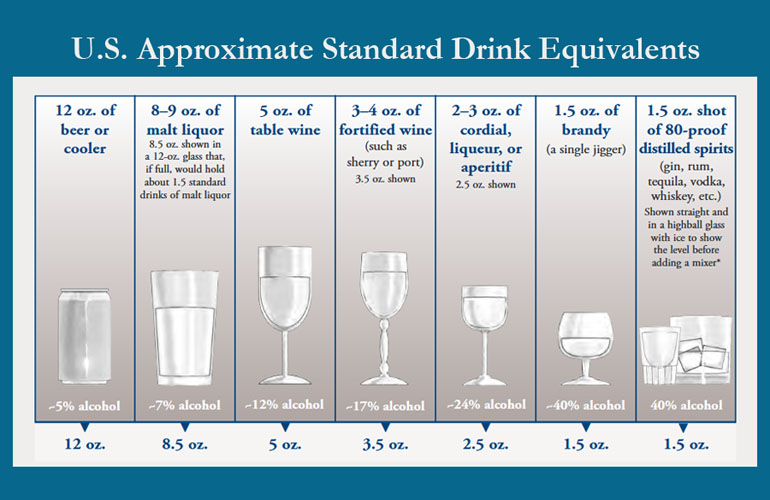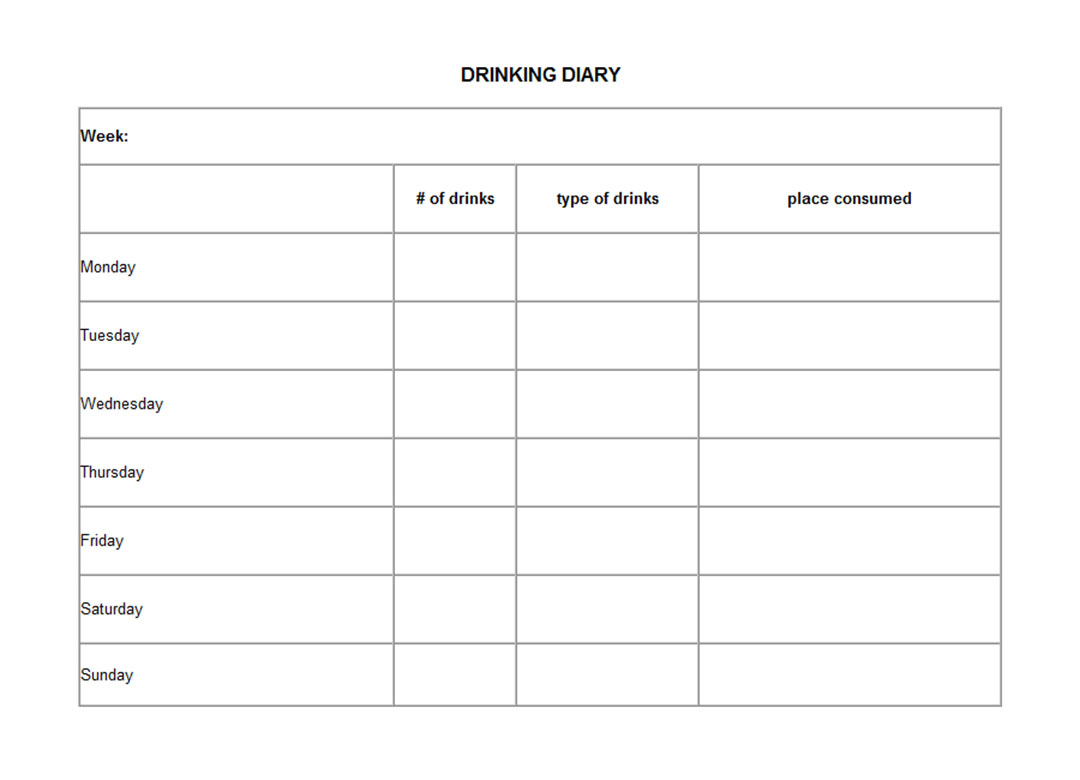Health Pages
Drinking Diary
Drinking Diary
To help you reach your goal, keep a diary of your drinking. For example, write down every time you have a drink for 1 week. Try to keep your diary for 3 or 4 weeks. This will show you how much you drink and when. You may be surprised. How different is your goal from the amount you drink now? Use the drinking diary below to write down when you drink.
Now you know why you want to drink less and you have a goal. There are many ways you can help yourself to cut down.
People who have milder forms of alcohol abuse or dependence and are unwilling to abstain may be successful at cutting down alcohol use and some of them may recover with little or no treatment.
A drink is:
- a 12-ounce bottle of beer;
- a 5-ounce glass of wine; or
- a 1½-ounce shot of liquor.
These limits may be too high for some people who have certain medical problems, use medications, or who are older. Talk with your doctor about the limit that is right for you. Check drink equivalents below.

Learn more:



